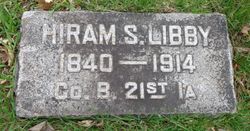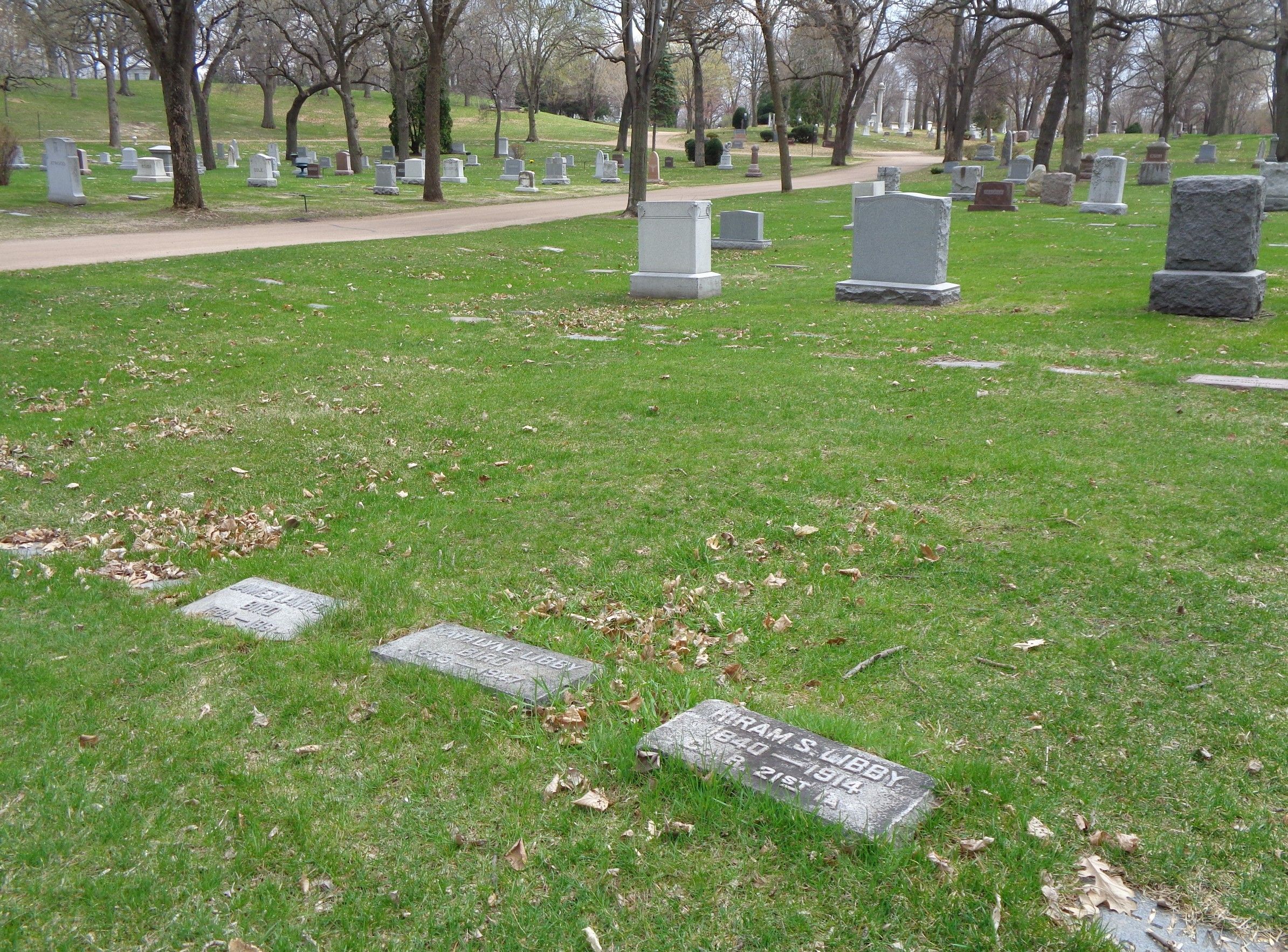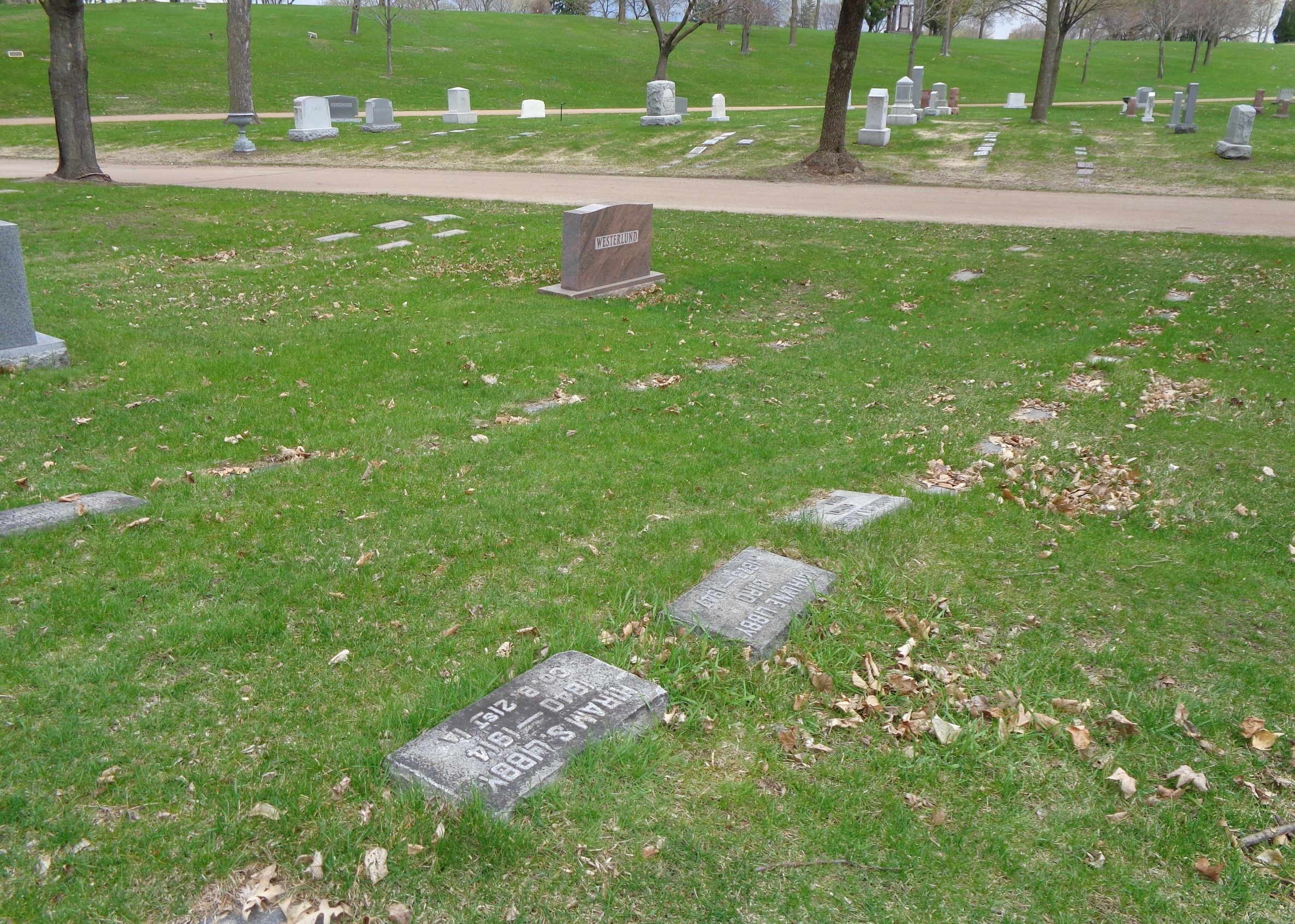He was born on November 9, 1840 in Somerset County, Maine. On August 9, 1862 he enlisted in what would be Company B of the 21st Regiment, Iowa Volunteer Infantry. During the first year of his service he participated in the regiment's one-day battle on January 11, 1863 at Hartville, Missouri, a one-day battle on May 1, 1863 at Port Gibson, Mississippi, and a May 17, 1863 assault at the Big Black River Bridge in Mississippi. On November 23, 1863 the regiment left New Orleans for Texas. They were stationed on the Gulf Coast when, on February 22, 1864, Hiram and several others were captured near Green Lake. He spent most of his captivity at Camp Ford near Tyler under severe conditions. When released at the Red River landing on July 22, 1864 he had a bad cough, his feet and legs from the knees down were swollen and inflamed, he could not wear shoes, and, at times, he cried "like a child from pain." Despite that, he served the balance of his term and was mustered out July 15, 1865 at Baton Rouge.
In 1871 Hiram was living in Minnesota and working on the farm of John Getchell near Glencoe. While oiling the gears of a threshing machine, Hiram slipped, his hand was caught in the gears, and he lost two fingers; a third was permanently stiff and bent against the palm of his hand. He later moved to Montana and worked in mines near Butte. Due to chronic lung problems and rheumatism resulting from his wartime captivity, and to the subsequently mangled hand, he was limited to what he could do and worked, according to a supervisor, as a "jack of all trades" doing light repairs, watching machinery, and doing some machinist and blacksmith work. He eventually moved back to Minnesota where he died on March 27, 1914.
In answer to a government inquiry, he said he had married Alice Roberts in 1867 in Forestville, Iowa; they had a daughter, Kathlyne J. Libby born June 1875; and his wife died about 1887 in Nevada. Kathlyne and her husband, James L. Bird were reflected on a 1940 census as living in Hennepin County, Minnesota.
bio by: Carl Ingwalson
He was born on November 9, 1840 in Somerset County, Maine. On August 9, 1862 he enlisted in what would be Company B of the 21st Regiment, Iowa Volunteer Infantry. During the first year of his service he participated in the regiment's one-day battle on January 11, 1863 at Hartville, Missouri, a one-day battle on May 1, 1863 at Port Gibson, Mississippi, and a May 17, 1863 assault at the Big Black River Bridge in Mississippi. On November 23, 1863 the regiment left New Orleans for Texas. They were stationed on the Gulf Coast when, on February 22, 1864, Hiram and several others were captured near Green Lake. He spent most of his captivity at Camp Ford near Tyler under severe conditions. When released at the Red River landing on July 22, 1864 he had a bad cough, his feet and legs from the knees down were swollen and inflamed, he could not wear shoes, and, at times, he cried "like a child from pain." Despite that, he served the balance of his term and was mustered out July 15, 1865 at Baton Rouge.
In 1871 Hiram was living in Minnesota and working on the farm of John Getchell near Glencoe. While oiling the gears of a threshing machine, Hiram slipped, his hand was caught in the gears, and he lost two fingers; a third was permanently stiff and bent against the palm of his hand. He later moved to Montana and worked in mines near Butte. Due to chronic lung problems and rheumatism resulting from his wartime captivity, and to the subsequently mangled hand, he was limited to what he could do and worked, according to a supervisor, as a "jack of all trades" doing light repairs, watching machinery, and doing some machinist and blacksmith work. He eventually moved back to Minnesota where he died on March 27, 1914.
In answer to a government inquiry, he said he had married Alice Roberts in 1867 in Forestville, Iowa; they had a daughter, Kathlyne J. Libby born June 1875; and his wife died about 1887 in Nevada. Kathlyne and her husband, James L. Bird were reflected on a 1940 census as living in Hennepin County, Minnesota.
bio by: Carl Ingwalson
Family Members
Sponsored by Ancestry
Advertisement
Records on Ancestry
Advertisement














